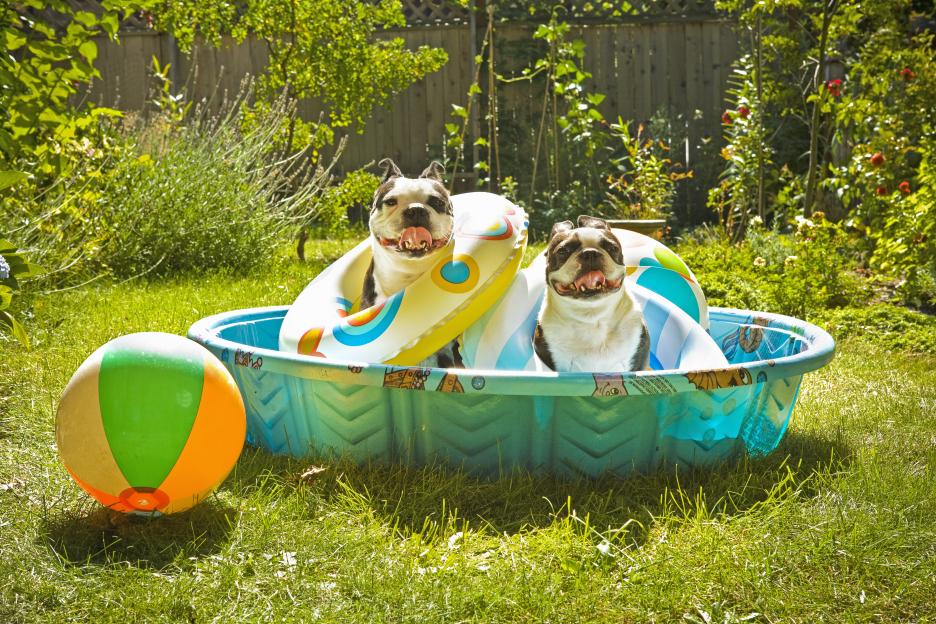WITH the third heatwave of the summer set to hit this week a vet has issued an urgent warning to dog owners â sharing six breeds that are most at risk of overheating.
According to animal experts, ‘extremely dangerous’ can cause a ‘life-threatening ‘ for .
 A vet has revealed six breeds which are susceptible to overheating
A vet has revealed six breeds which are susceptible to overheatingDr Suzanne Moyes, in-house vet at Burgess Pet Care , shares her advice on which dog breeds are most at risk of overheating and how to spot the signs.
She advised: “Heat stress in can happen at temperatures over 25 degrees. And, at 30 degrees or more, the risk of heatstroke increases significantly.
“If your dog shows symptoms such as faster panting, excessive drooling, darkened gums, agitation, staggering, vomiting or diarrhoea, seek advice from a vet immediately.
“If you spot the signs of overheating, take action to cool your pet immediately and consult your vet.”;
BREEDS AT RISK
Dr Moyes advised that Brachycephalic breeds of dogs have very short, flat faces, making it difficult for them to breathe.
She explained: “In hot , their facial structure can make it harder for them to regulate their body temperature easily.
“While not as extreme as some other brachycephalic breeds, boxers have shorter muzzles and can therefore also struggle with the heat as they can struggle to cool down.
“Boston terriers are another breed with a pushed-in face, making them more susceptible to heatstroke.”;
And it’s not just dog breeds with short, flat faces that are at risk.
Those with thick, double coats such as Chow Chows, Golden retrievers, Huskies and German shepherds have thick fur that traps the heat, increasing their chance of overheating.
Dr Moyes continued: “Senior dogs and overweight dogs are also more likely to suffer from heatstroke due to age and weight-related issues.
“While they’ve not got a thick coat, surprisingly Greyhounds can be at risk as their thin coats offer little protection from the sun, causing them to overheat quickly.
“While it’s important to monitor all dogs’ exposure to the sun, if you have a dog breed that is more at risk it’s vital to avoid prolonged time in the direct sun, ensuring they have shady spots and plenty of water.”;
 Those with thick, double coats such as Chow Chows are also at risk
Those with thick, double coats such as Chow Chows are also at riskTIPS FOR KEEPING DOGS COOL
1. NOTE WHERE THEIR BED IS SET UP
Dr Moyes says: “It’s advisable to never keep your dogs bedding and accommodation in a conservatory, especially in warmer months.
“Conservatories typically have poor air circulation, experience high temperatures and have a lack of cool, shady spots, making the risks of heatstroke more common if pets are kept here.”;
For indoor pets, such as cats and dogs, make sure they are set up in a room that stays cool â ideally on a lower floor in the house, to avoid heat rising.
Keep curtains and blinds closed during the day to block the heat out.
Keep a window open to ensure the room has good airflow or alternatively, place a fan nearby to help circulate the air.
Just make sure this isn’t blowing directly onto your pet.
 Boston terriers are another breed with a pushed-in face, making them more susceptible to heatstroke
Boston terriers are another breed with a pushed-in face, making them more susceptible to heatstroke2. GIVE THEM WATER RICH SNACKS
It’s important to make simple adjustments to your dog’s routine in hot weather to help keep their body temperature regulated.
Avoid over-handling them during the hottest parts of the day, especially for older dogs.
Ice cubes can be added to water bowls and consider lining a toy with meat or fish paste before putting it in the freezer to create a cooling snack for your dog to lick.
It’s important to consider that any dietary changes should be made gradually to avoid digestive upsets.
 Golden retrievers also have thick fur which increases their chance of overheating
Golden retrievers also have thick fur which increases their chance of overheating3. USE WET TOWELS
If your dog is suffering from heatstroke, you urgently need to lower their body temperature gradually.
To do this, move them to a shaded area and place wet towels near them to lower their temperature.
Just remember to never place ice on them as this can cause them to go into shock.
4. GROOM THEM
Stay on top of grooming and brush long-haired dogs daily in the summer months as their thick fur can trap the heat.
If a prolonged heatwave has set in, consider giving them a summer trim to keep them cool.







